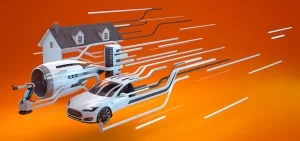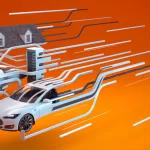
Introduction to Luxury Automobile Evolution
The upscale trajectory of the luxury car market stands in stark contrast to the wider automotive industry. While the latter finds itself embrailed in a tumultuous sea of stagnation, luxury automobile players sail forth, propelled by a growth forecast that doesn’t just outpace the mass market – it virtually eclipses it. As a participant and observer within this fascinating sphere, I have witnessed firsthand the shifting contours of what defines the luxury vehicle.
Understanding the Revolution in Luxury Car Design
– **Innovation as the New Cornerstone**: The luxury car industry is embracing innovation with a fervor not seen in the mass market segment. These brands are no longer satisfied with merely adding a veneer of opulence; they aim to redefine the driving experience.
– **Personalization and Exclusivity**: Today’s luxury vehicles are morphing into canvases for personal expression and exclusive designs. As a result, the influence of bespoke and limited-edition models is rising, providing a sense of uniqueness that elevates the owner’s status.
– **Technological Integration**: The convergence of cutting-edge technology within luxury vehicles is becoming ever more seamless. From advanced driving assistance to fully integrated infotainment systems, the implementation isn’t just about functionality – it’s about crafting an unparalleled user experience.
– **Sustainable Luxury**: Once thought to be contradictory terms, sustainability and luxury are now increasingly interconnected. The luxury segment is leading the charge in electric vehicle production and the integration of eco-friendly materials, signifying a broader shift in consumer values.
How AI and Algorithmic Design Are Steering the Future
– **Customization powered by AI**: The dawn of AI in car design opens up unprecedented avenues for customization. Predictive algorithms can now tailor a vehicle to an individual’s driving habits and aesthetic preferences, creating a machine that is as much a reflection of the owner as it is a form of transportation.
– **Enhanced Connectivity**: AI also shapes how drivers and cars interact with the environment. Enhanced connectivity options mean that luxury cars can respond to external data such as traffic conditions, weather, and even the driver’s schedule, optimizing routes and comfort proactively.
– **Autonomous Driving Features**: The roadmap towards fully self-driving vehicles is becoming clearer, and luxury brands are at the forefront of this evolution. Autonomous driving features not only offer the promise of increased safety but also introduce a new realm of comfort and convenience for occupants.
– **Innovative Aesthetics**: Algorithmic design isn’t limited to functionality. It has begun to reshape the very aesthetics of luxury cars, introducing fluid, dynamic lines and configurations that wouldn’t be possible without advanced computation, further differentiating luxury cars from their conventional counterparts.
In this landscape, it’s clear that luxury vehicles are becoming more than mere status symbols; they are harbingers of a future where your car is as individual and integrated into your lifestyle as your smartphone. The intersection of personal luxury and technological prowess is where I find the industry inevitably heading, and it’s a journey that promises to be as exhilarating as it is transformative.
The Dynamics of Luxury Automobile Markets
Assessing the Growth and Profitability of Luxury Cars
In my view on the evolving automobile industry, the luxury vehicle segment undeniably represents an area of growth and profitability that far exceeds what we’re witnessing within the mass market.
– **Growth Trends:** According to McKinsey, the luxury car market is forecasted to grow between 8 to 14 percent annually through to 2031. This starkly contrasts with the stagnation of the mainstream automotive market.
– **Market Dynamics**: What’s particularly interesting is that luxury vehicles are beginning to redefine their segment, no longer being mere pricier alternatives to standard cars, but transforming into something considerably more distinctive and desirable.
– **Economic Factors**: One can argue that the prosperity of this market segment could be linked to the rise in global affluence, with a burgeoning class of consumers who are willing to invest in higher-end products.
The way that luxury automotive brands are disconnecting from the pack speaks volumes about how they are perceived not just as modes of transportation but as symbols of status and achievement.
Why High-End Autos Garner More Buzz Than Mass-Market Models
– **Branding Power**: Luxury cars, with their esteemed badges, exude an aura of exclusivity and prestige that simply cannot be replicated by mass-market models. This is a key factor that stimulates conversation and excitement around these brands.
– **Technological Innovation**: High-end manufacturers are often at the forefront of introducing cutting-edge technology and pioneering features which can, in time, filter down to the mass market. Yet, initially, these advancements contribute significantly to the ‘buzz’ surrounding luxury vehicles.
– **Customization and Personalization**: I’ve observed that luxury automobile brands offer an extensive range of customization options, which appeals immensely to those looking to express individuality through their choice of vehicle.
– **Marketing Campaigns**: Luxury car manufacturers are known for their compelling storytelling and aspirational marketing campaigns that capture the imagination of consumers and the media alike, generating organic buzz.
– **Influence and Partnership**: Collaborations with high-profile personalities and presence in exclusive events further heighten the allure and conversation around luxury vehicles.
In conclusion, as someone deeply interested in the trajectory of the automotive market, it’s clear to me that the luxury car sector isn’t just outpacing the mass market in terms of growth, but it’s also constantly redefining what a premium automobile can offer. The combination of aspirational branding, innovation, and unparalleled customer experiences is what continues to propel this sector to new heights, securing its profitability and buzz in the competitive automotive landscape.
Autonomous Driving and Luxury Brands
Jaguar Land Rover’s Vision for Modern Luxury Vehicles
In analyzing Jaguar Land Rover’s blueprint for the future, it is evident that modern luxury cars are morphing into sophisticated living spaces on wheels. Here’s what I’ve noted:
– **Strategic Innovation**: Jaguar Land Rover is heavily investing in autonomous driving capabilities, aiming to seamlessly integrate smart technology into the driving experience.
– **User-Centric Design**: Their focus on crafting user-driven interfaces and in-car experiences suggests a deep understanding of their clientele’s desire for both luxury and technological brilliance.
– **Emission Goals**: As a pioneer in the move toward electric mobility, Jaguar Land Rover has committed to offering an electrified option for its models, recognizing the shift towards more sustainable luxury travel.
This vision secures Jaguar Land Rover’s position at the forefront of the luxury car market’s evolution, mirroring a shift in consumer preferences towards vehicles that reflect their values and lifestyle needs.
How Autonomous Technology is Reimagining Driving Experiences
My perspective on autonomous technology is that it’s revolutionizing the very fabric of driving, which now emphasizes passenger experience over traditional driving roles. Some critical aspects of this revolution include:
– **Enhanced Safety**: Autonomous driving promises to reduce human error, which is often the cause of traffic incidents. Advanced driver-assist features are precursors to fully autonomous capabilities, enhancing safety and peace of mind.
– **Redefining Travel**: For those who view cars as more than a means of transport, autonomous technology allows their journey to be a time of productivity or relaxation, changing perceptions of travel time.
– **Smart Interiors**: Luxury brands are exploring interiors that adapt to driverless technology—a transition from cockpits to lounge-like spaces, equipped with intelligent interfaces that respond to voice commands and gestures.
I’m particularly fascinated by how luxury cars are increasingly becoming showcases for new tech, not just in the powertrain or materials used, but throughout the driver and passenger experience. It’s clear that luxury car makers are using autonomy not just to bolster safety or efficiency, but to redefine the concept of the drive itself.
The inclusion of AI is also leading to predictive personalization, where the car anticipates needs and preferences, making each journey uniquely tailored.
The integration of these technologies aligns perfectly with the luxury market’s emphasis on bespoke services and exclusivity. It’s a development that I believe enthusiasts like myself will watch closely as we move towards a future where luxury, comfort, and innovation are inextricably linked, with autonomous driving at the helm.
The Intersection of Luxury, Sustainability, and Technology
Mercedes-Benz’s Approach to Eco-friendly Luxury
As I continue to delve into the luxury automobile industry, my attention has been drawn to the strides being made in sustainability by leading brands. Take Mercedes-Benz, for instance. They have long been a name associated with opulence and performance, yet they have not shied away from incorporating eco-friendly approaches into their luxury lineup.
– **Electrification of Models**: Mercedes-Benz is transitioning towards electrification with models such as the EQ series, balancing luxury with lower emissions.
– **Innovative Materials**: They are using sustainable materials in their vehicle interiors, reducing their reliance on traditional leather and wood, and moving towards recyclable and renewable resources.
– **Energy Efficiency**: Energy-efficient manufacturing processes and facilities aim to cut down on the carbon footprint associated with building these high-end machines.
– **Emission Reduction Goals**: A clear set of goals to reduce their overall emissions solidifies Mercedes-Benz’s commitment to eco-friendly practices in the long term.
For those of us observing the market’s direction, it’s fascinating to see such an established brand evolving to meet the environmental challenges of our time without compromising their legacy of luxury.
Fusing High-End Appeal with Environmental Responsibility
Luxury cars have traditionally been synonymous with excess and indulgence, but a fresh trend is emerging that harmonizes opulence with environmental stewardship.
– **Material Innovation**: High-end manufacturers are investigating and adopting materials that are both luxurious and sustainable. Vegan leather, for instance, is a growing trend that offers the plush feel of traditional leather without the environmental toll.
– **Hybrid Technology**: Many luxury brands are offering hybrid vehicles that promise the performance expected of a premium automobile while delivering better fuel efficiency and lower emissions.
– **Solar Roof Technology**: An exciting development is the integration of solar roof panels on some luxury vehicles, taking advantage of renewable energy to power vehicle electronics and aid battery charging.
– **Eco-friendly Brands**: New players in the luxury automobile market, specifically targeting the eco-conscious consumer, are gaining popularity. Companies like Tesla are setting benchmarks for how luxury and sustainability can go hand in hand.
The landscape of luxury cars is evolving before our eyes, with environmental responsibility becoming as much a part of the high-end automobile ethos as performance and prestige. For many of us who are passionate about cars and the future of the planet, this shift towards sustainability within the sphere of luxury automobiles is not just a trend but a necessary progression that could redefine what it means to drive and own a piece of modern luxury.
Building Trust in New Automotive Technologies
Challenges and Strategies for Acceptance of New Car Tech
As a fervent observer and commentator on the automotive industry’s evolution, it’s clear that one of the largest hurdles facing the integration of new technologies into luxury vehicles isn’t purely technical—it’s trust. Consumers must trust the technology for it to gain widespread acceptance. Let me delve into a few of the critical challenges and corresponding strategies being addressed by the industry.
– **Ensuring Safety and Reliability**: The primary concern with new technologies, especially those dealing with autonomy and AI, is safety. Manufacturers are investing heavily in rigorous testing and validation to uphold the highest safety standards.
– **Education and Transparency**: A strategy to build trust is educating potential buyers about how the technology works. By being transparent about the capabilities and limitations of new car tech, automakers can mitigate fears and build credibility.
– **Regulatory Compliance**: Collaborating with regulatory bodies to ensure that these new technologies comply with existing and forthcoming regulations is essential. Regulatory approval can reinforce consumer confidence.
– **Customer Experience**: Providing opportunities for customers to experience new technologies—such as pilot programs, test drives, and virtual simulations—can alleviate apprehensions and foster a sense of familiarity and comfort.
Through addressing these challenges with thoughtful strategies, luxury car brands can pave the way for broader acceptance of the advanced technologies that they are working so hard to develop and integrate into their models.
The Role of Customer Confidence in Adopting Autonomous Vehicles
The subject of autonomous vehicles elicits a spectrum of reactions, from excitement to skepticism. The key to realizing the future of self-driving cars lies in the hands of the consumers and their willingness to trust the technology behind it. Below are factors that are essential in building this trust:
– **Proven Track Record**: Manufacturers need to demonstrate a track record of reliable and secure technology. This can be achieved through real-world testing and documented performance metrics.
– **User Interface and Interaction**: The ease with which users can interact with autonomous technology is crucial. A clear, intuitive interface that provides real-time feedback helps build confidence in the system’s capabilities.
– **Brand Reputation**: A brand’s reputation for quality and innovation can lend credibility to its new technologies. Luxury carmakers, with their history of marrying performance with cutting-edge features, are well-positioned to engender trust.
– **Collaborations and Partnerships**: Partnering with tech companies and other industry leaders can imbue automotive brands with additional layers of expertise and trustworthiness.
Ultimately, I see that the role customer confidence plays is not to be underestimated. As we forge ahead, ensuring that the users of luxury vehicles feel secure and in control with the new wave of automotive technology will be instrumental to the success of our industry’s revolutionary transition.
Rolls-Royce 103EX Concept: A Glimpse into the Future
Introducing the Visionary Rolls-Royce 103EX
In the realm of high-end luxury vehicles, the Rolls-Royce 103EX Concept stands out as a beacon of innovation. Rolls-Royce has crafted a narrative that this vehicle will be as unique as the individual, akin to the uniqueness of a fingerprint. The notion is intriguing, to say the least. Here’s what has caught my eye about this groundbreaking concept car:
– **Customization at its Core**: It’s suggested that owners will have unparalleled options for customization, promising an unprecedented level of personalization in automobile ownership.
– **Futuristic Design**: The 103EX Concept is characterized by its sleek, futuristic design, rejecting conventional automotive aesthetics for something far more visionary.
– **Sustainable Luxury**: The idea is that this vehicle will not just elevate the standard for luxury but will also uphold eco-friendly principles, marrying opulence with responsibility.
Rolls-Royce’s ambition with the 103EX Concept pushes the envelope on what defines a luxury automobile, challenging norms and setting a new bar for the automotive world.
Journey into the Future of Autonomous Luxury Travel
Advancements in technology are reshaping the driving experience, and the journey towards fully autonomous luxury cars is being defined by several key forces. As I explore this terrain, I see a future painted with the colors of artificial intelligence (AI), niche manufacturing, and exclusivity due to increasing rarity.
– **Artificial Intelligence**: AI is the cornerstone of creating cars that can think and react, promising a level of autonomy that could transform the way we interact with vehicles.
– **Level 4 Autonomy**: Although a full Level 4 autonomous ride—one where you could, say, comfortably watch a movie without paying attention to the road—is still years, possibly even decades away, the groundwork is being laid now.
– **Niche Manufacturing**: With the rise of small-scale, specialized production, vehicles like the 103EX Concept are feasibly crafted to cater to the discerning needs of a niche clientele.
– **Streamlined Cockpits**: New technology is set to simplify the cockpit, removing redundant controls and focusing on the user experience, as seen in designs like Aston Martin’s Lagonda All-Terrain Concept.
The anticipation of what Rolls-Royce is creating is palpable. Though the wait may be lengthy, it’s an exciting chapter in the automotive industry, one where luxury, AI, and personalization blend to usher in an era of unparalleled automotive sophistication. As I track these developments, I’m both a witness and an eager participant in what promises to be a fascinating journey into the future of luxury, autonomy, and personal expression in travel.
Sustainable Innovation in Luxury Automobiles
How Luxury Brands Are Embracing Green Tech
As I delve deeper into the world of high-end vehicles, it becomes apparent that luxury brands are not just riding the wave of sustainability, they’re actively propelling it forward. Here’s a snapshot of how they’re revolutionizing the market:
– **Electric Powertrains**: Leading luxury car manufacturers are integrating electric powertrains into their newest models. This isn’t just about keeping up with regulatory demands; it’s about exceeding them and setting new industry benchmarks for performance and efficiency.
– **Eco-Friendly Materials**: The use of sustainable and recycled materials is gaining traction. Think bamboo, eco-leather, and repurposed plastics that match the quality expected in a luxury interior while reducing environmental impact.
– **Solar Roof Technology**: Brands are exploring integrated solar roofs not only to power auxiliary systems but also to contribute to the car’s main energy needs. These solar cells are both a statement of eco-consciousness and a practical step towards energy independence.
Through these initiatives, luxury car brands are illustrating their commitment to more than just the aesthetics of luxury; they’re demonstrating a responsibility towards the planet that aligns with the values of their discerning clientele.
The Impact of Sustainability on Vehicle Design and Performance
The pursuit of sustainability is doing more than just changing how cars operate, it’s reshaping their essence. Below, I explore the intersection of design, performance, and the environment:
– **Aerodynamic Efficiency**: Designers are leveraging sustainability to optimize aerodynamics, which, in turn, enhances performance. These sleek designs are not just visually appealing; they’re instrumental in reducing drag and increasing range, particularly crucial for electric vehicles.
– **Lightweight Construction**: Advances in materials are leading to lighter and stronger cars. Carbon fiber and aluminum alloys are improving performance by reducing weight, which is vital for battery efficiency and agility on the road.
– **Regenerative Braking Systems**: Luxury brands are perfecting regenerative braking technology that recovers energy normally lost during braking. This innovation contributes to greater energy efficiency and sets new standards in sustainable automotive engineering.
Inherent in these trends is an understanding that the future of luxury vehicles lies in harmonizing premium experiences with environmental integrity. Manufacturers are balancing the need for speed and splendor with a renewed focus on eco-friendliness, ensuring that luxury cars remain desirable both for their exclusivity and their ethos.
Customer-Centric Design in High-End Vehicles
Meeting Luxury Consumer Expectations with AI and Design
As I delve deeper into the luxury car market, I notice a distinct shift towards a customer-centric approach in vehicle design. This transition is not just a reflection of technological prowess but also a response to the evolving demands of luxury consumers. Below are a few insights on how these expectations are being met:
– **Enhanced User Experience**: The push for more advanced AI-driven features is apparent. With the integration of artificial intelligence, user experience is elevated through personalized infotainment systems and responsive vehicle controls that can learn and adapt to the owner’s preferences.
– **Design Sophistication**: High-end automotive brands are now emphasizing sleek and intuitive designs that go beyond aesthetics. The goal is to create an environment within the vehicle that is both luxurious and functionally superior, setting a standard for what interiors of the future will appear like.
– **Connectivity as a Standard**: Modern luxury vehicles are being designed with a high level of connectivity, anticipated to be a core facet of such cars. The notion is to keep passengers seamlessly connected to their digital lives, even while on the move, without compromising on the elegance and comfort.
My observations indicate that these features are not just add-ons but rather integral components of what defines a luxury car in the modern era.
Personalization and Exclusivity in the Automotive Experience
Moving towards the aspect of personalization and exclusivity, I come to understand that these elements are now fundamental in luxury car manufacturing:
– **Tailor-Made Solutions**: As each individual seeks a degree of distinctiveness, high-end auto manufacturers are offering tailor-made solutions. The capacity for customization ranges from unique color palettes to custom-fit interiors, ensuring that each vehicle is reflective of its owner’s personality and tastes.
– **Limited Edition Models**: There’s a growing trend for producing limited edition models, which adds to the allure of owning something truly rare and exotic. Such exclusivity not only enhances the ownership experience but also amplifies the vehicle’s value as a collectible item.
– **Exclusive Owner Benefits**: Beyond the car itself, luxury car ownership increasingly includes a range of exclusive benefits, such as private events, VIP services, and elite clubs. This only heightens the appeal for those who desire not just a product, but an all-encompassing luxury experience.
My interaction with industry trends validates that luxury car makers are pushing the boundaries of what it means to drive — or be driven in — a high-end vehicle. It’s about crafting an experience that starts from the very first encounter and extends into a lasting relationship between the car and its owner. The luxury automotive sector ignores the “one-size-fits-all” philosophy and embraces the ethos of individuality, exclusivity, and personal relevance.
Emerging Trends in the Luxury Car Market
Reflecting on the Progress and Potential of Luxury Automobiles
Reflecting on the progress of the luxury car segment, it is evident that it has transcended traditional boundaries. The integration of artificial intelligence and the focus on niche manufacturing are salient factors that have revolutionized the industry.
– **AI-Enhanced Driving Experience**: I’ve observed that luxury automobiles implement AI not only for dynamic user interactions but also to improve vehicle performance and safety features. This enhancement includes predictive maintenance and advanced driver assistance systems (ADAS), which elevate the driving experience.
– **Streamlined Cockpit Designs**: The advancement in technology, particularly in AI, has led to a reimagined cockpit design. Luxury vehicles, such as Aston Martin’s Lagonda All-Terrain Concept, showcase how a streamlined cockpit can merge functional simplicity with an aura of elegance.
– **Sustainability in Luxury**: The electrification of vehicles is another focal point. Luxury car brands are committing to sustainability without compromising on performance, as seen in the growing trend towards electric and hybrid supercars that offer guilt-free opulence.
The potential of luxury automobiles continues to expand, foreshadowing a future where the driving experience is defined by a harmonious fusion of technology, luxury, and personalized exclusivity.
What Lies Ahead for the High-End Automotive Industry
Looking forward, the high-end automotive industry appears to be marching towards an exciting horizon:
– **Evolving Customer Demographics**: Younger affluent consumers are beginning to shape the market with their preferences for tech integration and social responsibility. Luxury automakers are, therefore, adapting to these new needs, investing in connected services and green technology.
– **Autonomous Driving Technology**: While still in development, fully autonomous driving is projected to become an integral part of luxury vehicles. This innovation is set to completely transform the passenger experience, offering comfort and luxury in a personal mobile space.
– **Enhanced Connectivity and Services**: Connectivity extends beyond the vehicle, as luxury brands look to create an ecosystem that offers a holistic lifestyle brand experience. Future services could include concierge-style offerings, integrated with personal digital assistants, to curate a unique luxury lifestyle for each owner.
– **Increasing Rarity and Exclusivity**: The emphasis on rarity and niche manufacturing suggests a future where luxury vehicles are not just modes of transportation but also works of art. Manufacturers might offer designs with limited production runs to maintain exclusivity and desirability.
Luxury car manufacturers are vigorously innovating to shape a future that is more personal, more exclusive, and ultimately, more attuned to the desires and expectations of luxury consumers. The emphasis is clearly on crafting not just vehicles but experiences that resonate on a personal level, ensuring that luxury vehicles continue to occupy a distinct, coveted space in the automotive landscape.
















